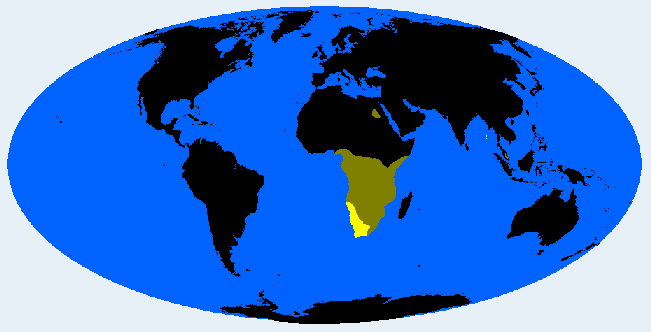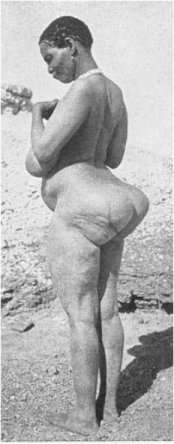The most remarkable feature in human fat distribution is steatopygia. In steatopygic individuals there is a marked accumulation of fat over the buttocks, even when the fat layer of the rest of the body is only slight to moderate. In extreme cases the upper surface of the buttocks is so large that an infant can stand on it with arms around the mother's neck. Steatopygia is usually more pronounced in females, but also occurs in males. In periods of rich food supply the fat accumulation quickly increases, while it reduces in periods with poor food supply.
It is found mainly in tropical regions, especially among Khoids. But also Sanids and more sporadically across several regions of Africa. Mild steatopygia is sometimes found in African Pygmies, Hadza, Bongo, Karamojong, Somali, Bantu, Camerunians, and others. In Asia it is relatively marked in the Onge tribe of the Andaman Islands, and sporadically in other Andamanids as well as Semangids.
Steatopygia is also present in some statues of the stone age (e.g. Venus of Polichinelle). The case is less clear for other statues (Venus of Willendorf, of Lespugue, etc.).
Overall it seems steatopygia has long been a beauty ideal in some indigenous societies.
From an evolutionary perspective, steatopygia helps individuals to survive periods of severe food shortage. Similar phenomena are found in some desert animals like camels and dromedaries, that store fat in their humps. Similarly in some domesticated animals, e.g. fat-tailed sheep, that store most of their fat in the tail.

|
 |



